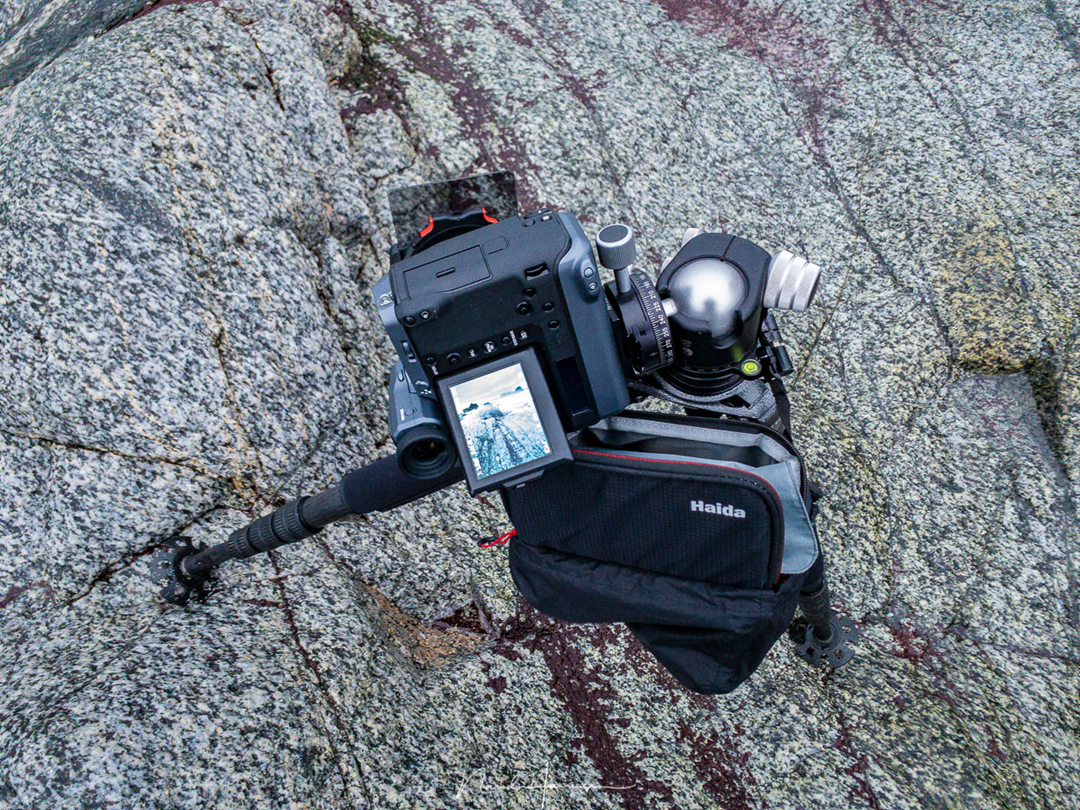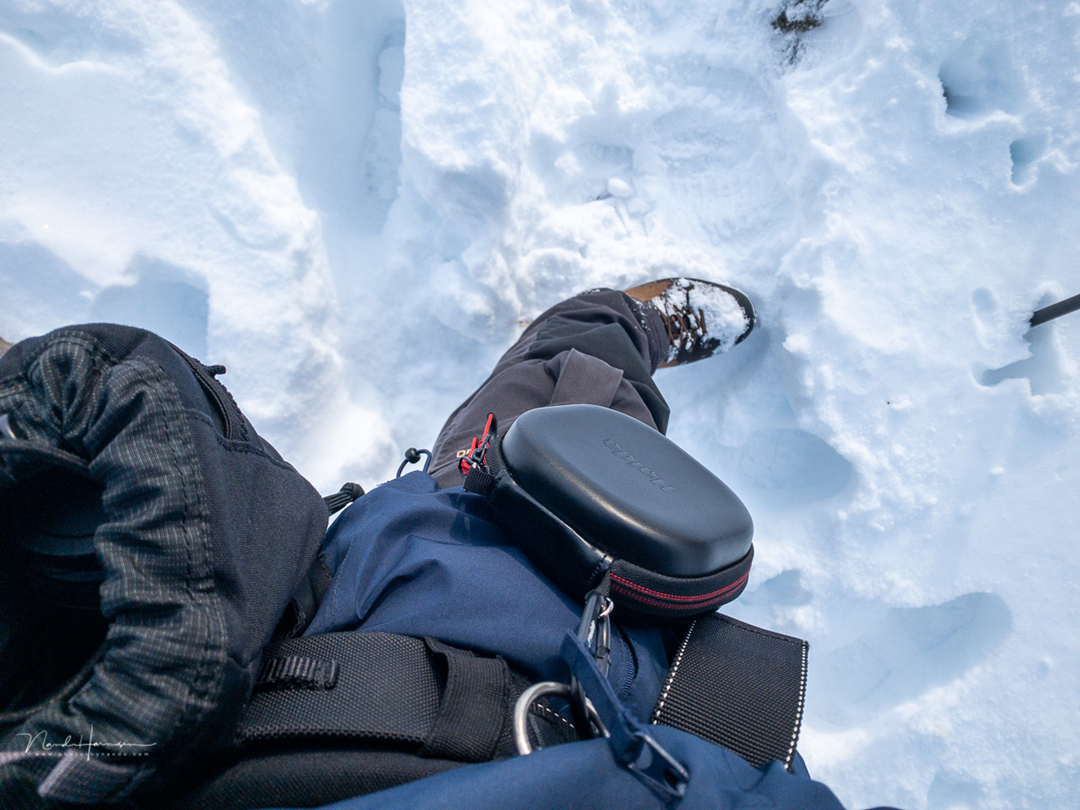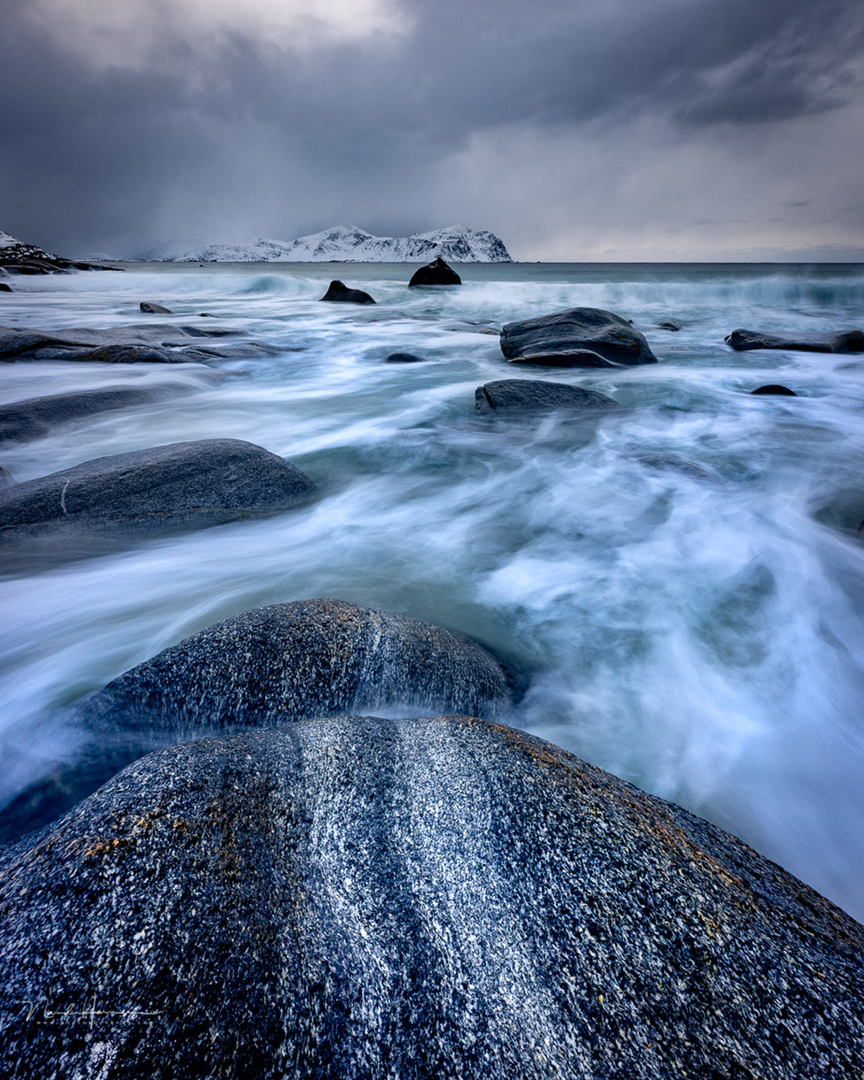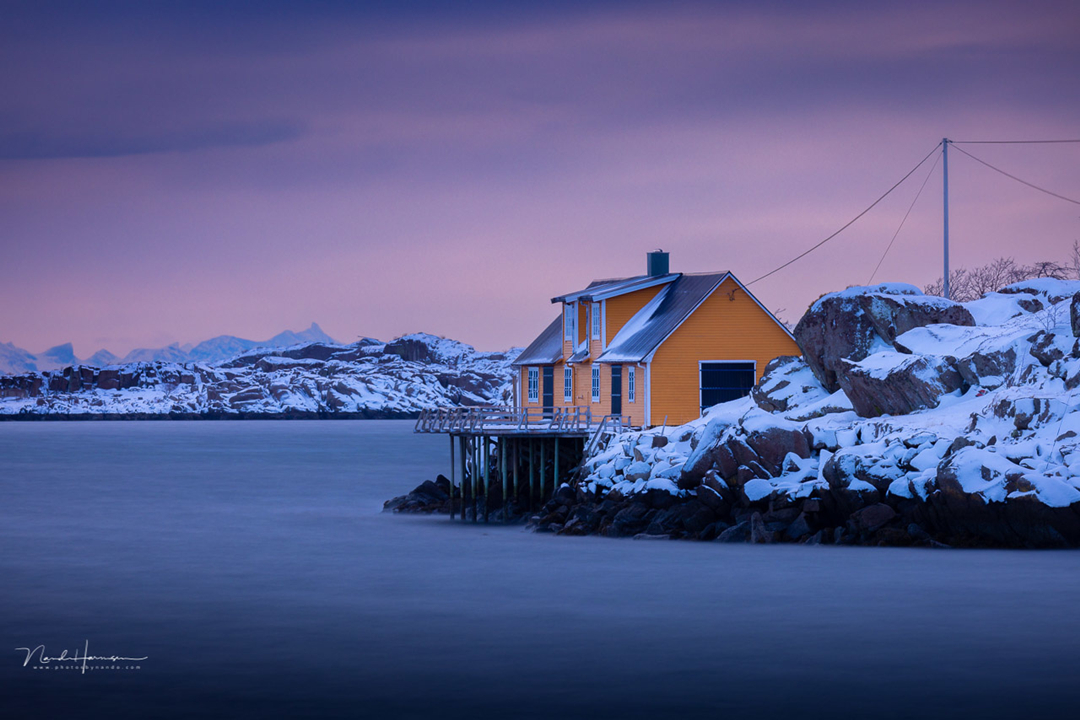Haida Magnetic Filters Versus Square Filter System
I have been using a square filter system for many years. It proved to be a flexible system that allows one filter to fit on every lens I own. A magnetic filter system is a great alternative, though. I tried both during my recent travels over Lofoten, Norway and I want to share my experiences.
I started using filters somewhere in the eighties of the previous century. It was quite similar to the Cokin system back then. It provided a range of creative filters that brought a lot of possibilities. I remember the star filters and kaleidoscope filters that were perfect for photographing festivities.
When I dived into the digital world of photography, a lot of effects could be produced digitally. But one thing proved nearly impossible: the long exposure photo. For that, I bought the famous Lee Big Stopper in 2009 (still available) and with it a set of gradient filters.
Today I use the Haida M10 II filter system with the Haida Red Diamond filters. The quality is outstanding and it allows me to achieve great results. I carry a nice pouch that contains the M10 II filter holder and a bunch of square and rectangle Red Diamond filters.
I used the Haida M10 filter system on Lofoten in 2020, the last time I visited these Norwegian islands. The filter pouch carries all filters and has room for the filter holder also.
The Magnetic Filters
Haida provided me with a set of round magnetic neutral density filters a while ago. I used these filters during my trips to the local Wadden island of Ameland. I was positively surprised by how easy these magnetic filters work. You can find my review of these filters here on Fstoppers.
The nice thing about the magnetic filter is the size compared to the square filters. I decided to buy some more magnetic filters in 82mm size, together with a few magnetic step-up rings. This way I created a filter system for my lenses that can be considered similar to the square filter system. One filter to fit all lenses.
 The Haida magnetic filter in use at Lofoten 2022
The Haida magnetic filter in use at Lofoten 2022
A Comparison at Lofoten
After two years I was able to guide a Lofoten photography tour again. Two weeks wandering over the Norwegian islands and visiting all the great photo locations under amazing weather situations.
We had clear and cold days, but also windy days that changed into a severe winter storm. We got a lot of snow and even a few rainy days. We had it all, and continued photographing the beaches and mountain views under every weather situation.
 This is one of the weather situations we encountered. We kept on photographing no matter what.
This is one of the weather situations we encountered. We kept on photographing no matter what.
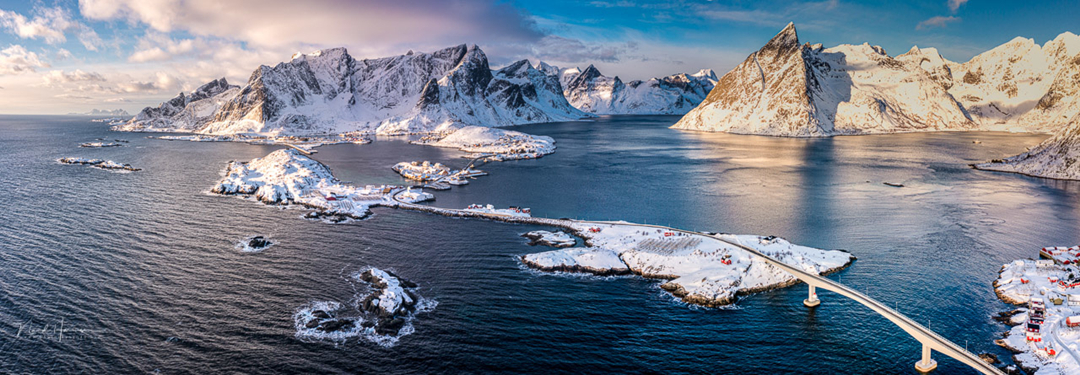 We also had some great clear days, like the day we visited the Hamnøy/Reine area.
We also had some great clear days, like the day we visited the Hamnøy/Reine area.
I had both filter systems with me, the square filter system and the magnetic filter system. Which system would prove the most convenient one?
The Round Magnetic Filter System
I started using the magnetic filters. Each lens was fitted with a magnetic (step-up) ring and a magnetic lens cap. A small round hard case held the magnetic 82mm filters. I carried a polarization filter, a 6 stops ND filter, and a 10 stop ND filter. Unfortunately, the 3 stop ND filter was on backorder.
The hard case could easily be carried on my belt with the provided carabiner. The weight is negligible. I just had to remove the magnetic lens cap to allow the required filter to snap into place. No light leakage, no large filter plate, and no filter holder that has to be placed first.
The hard case for the Haida magnetic filters is small and easy to carry with you.
It works quickly and easily. I could also place the magnetic lens cap onto the ND filter itself, which proved very handy during rainfall or snowfall. I loved using the magnetic filters this way, especially in less-than-ideal weather situations.
The downside of the magnetic filters is the risk of vignetting when two filters are stacked onto an ultra-wide angle lens. At 16mm on full frame, there was minor vignetting visible. Another issue could be the reduced magnetic strength when two or more filters are stacked, although it didn’t have any problems when I used two filters at the same time.
A five minute exposure with the Haida magnetic filters. I stacked the 10 stop and 6 stop filter to achieve the exposure time.
The round filters don’t allow good use of graduated filters. Although there are graduated filters available, the gradient is always in the middle. If you’re into graduated neutral density filters, the round magnetic filter system isn’t for you. But for ND filters it might be perfect.
The Square Filter System
I also used the Haida M10 II filter system, together with the set of neutral density filters similar to the magnetic filters. Besides the 6 stop and 10 stop filter I also used a 4 stop filter, ideal for photographing the moving water of the surf.
A 4 stop filter is perfect for shooting the waves between the rocks. You don't want a really long exposure for these situations.
The use of these filters is well known for most photographers. Place the filter holder onto the lens, and slide in the square ND filters. Its use is very straightforward, and the downsides are also well known. During rainfall or snowfall, the filter is relatively easy to clean. But when you are finished photographing, the filter has to be removed, wiped clean, and stored away.
You also have to remove the filter holder if you want to shield the lens from the falling rain or snow. I tend to carry a kitchen towel with me to cover the camera and filter holder. But after a while, it will get soaked.
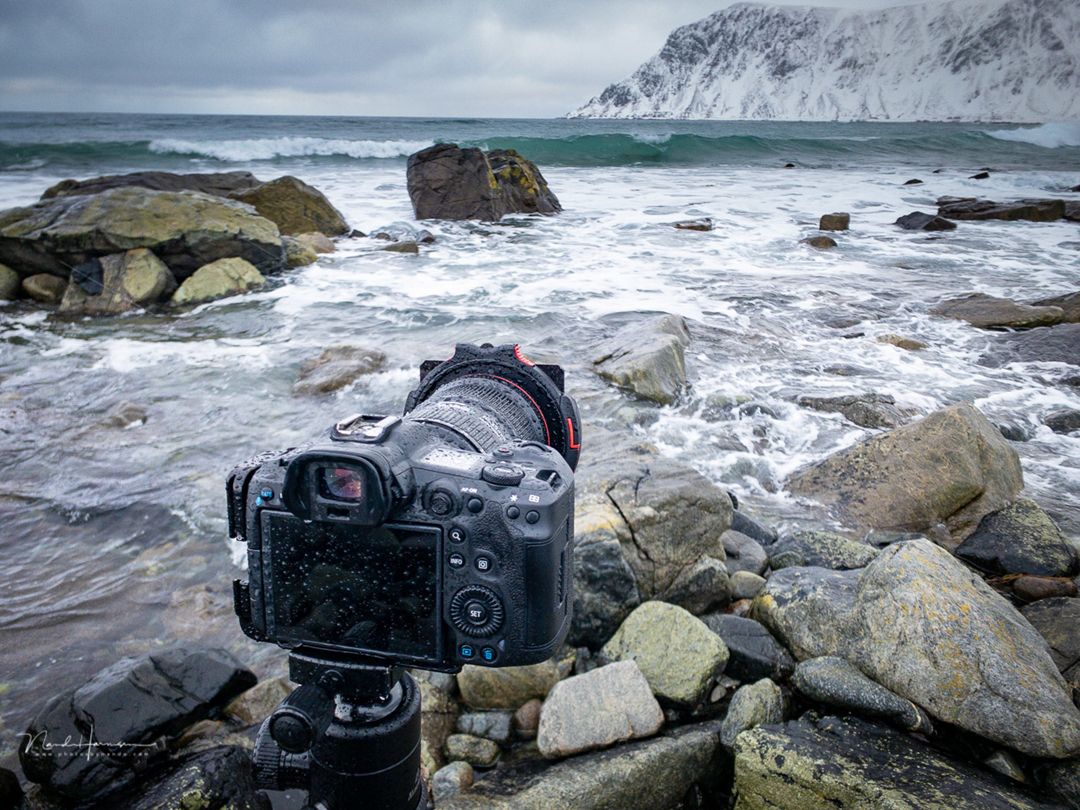 Using the Haida M10 II filter system at the beach on Skagsanden. The rain came from behind, making it easy to achieve longer exposure times without rain drops on the filter.
Using the Haida M10 II filter system at the beach on Skagsanden. The rain came from behind, making it easy to achieve longer exposure times without rain drops on the filter.
The plus side of the square filter system is the ability to use the graduated neutral density filters. You can position the filter with the gradient in the required location. There is also less risk in vignetting when stacking filters.
Choosing the Right System
If you're using only ND filters, the magnetic filter system may be a more convenient system compared to the more bulky square filter system. For one, it's easy to carry with you, especially when reducing weight and space is important. The use of magnetic filters is also easier during less than ideal weather conditions. These conditions are often more interesting for landscape photography, but it may prove difficult using the traditional square filter system. The magnetic filters make it easier.
It proved to be a little tricky, shooting a long exposure with almost 300mm under windy conditions. Square filters may catch more wind, compared to a magnetic system.
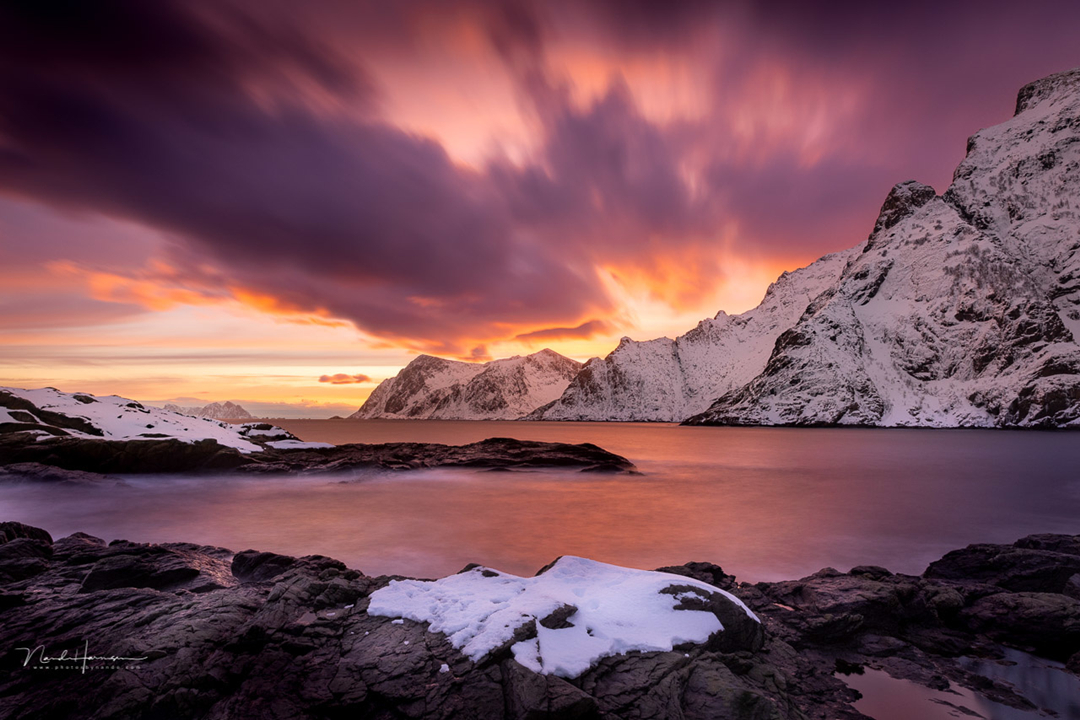 Amazing colors at the end of the day at Å i Lofoten.
Amazing colors at the end of the day at Å i Lofoten.
A tranquil evening twilight and the full moon. This two minute exposure gave me extra time to enjoy the moment.
On the other hand, placing magnetic filters may prove more difficult when wearing thick gloves. The filters are thin and small. Stacking filters may result in some vignetting when using an extreme wide-angle.
I loved the magnetic filters in the sometimes extreme weather conditions. It makes the use of ND filters less of a problem. Still, if there is no rainfall or snowfall, I prefer the use of the bigger square filters. It takes more work installing, but if you’re enjoying photography at a great location, it is no punishment to spend a bit more time installing.
The surf at Skagsanden beach. It was raining during this photo. The behind the scenes photo can also be found in this article.
Having both systems is the ideal situation, but based on the experience I have, perhaps you can make the best choice when you’re in the market for a filter system. What are your thoughts on these filter systems and which you would prefer for your photography? Please share your opinion in the comments below.
Related News
- Haida Magnetic Filters Versus Square Filter System
- Haida V2 Anti-Fog Belt
- Haida Team Wishes You a Merry Christmas
- Haida Picture Appreciation | November 2025
- Haida Carbon Fiber Protective Plate
- Haida New Filter Kits for DJI Mini 5 Pro and Mavic 4 Pro


